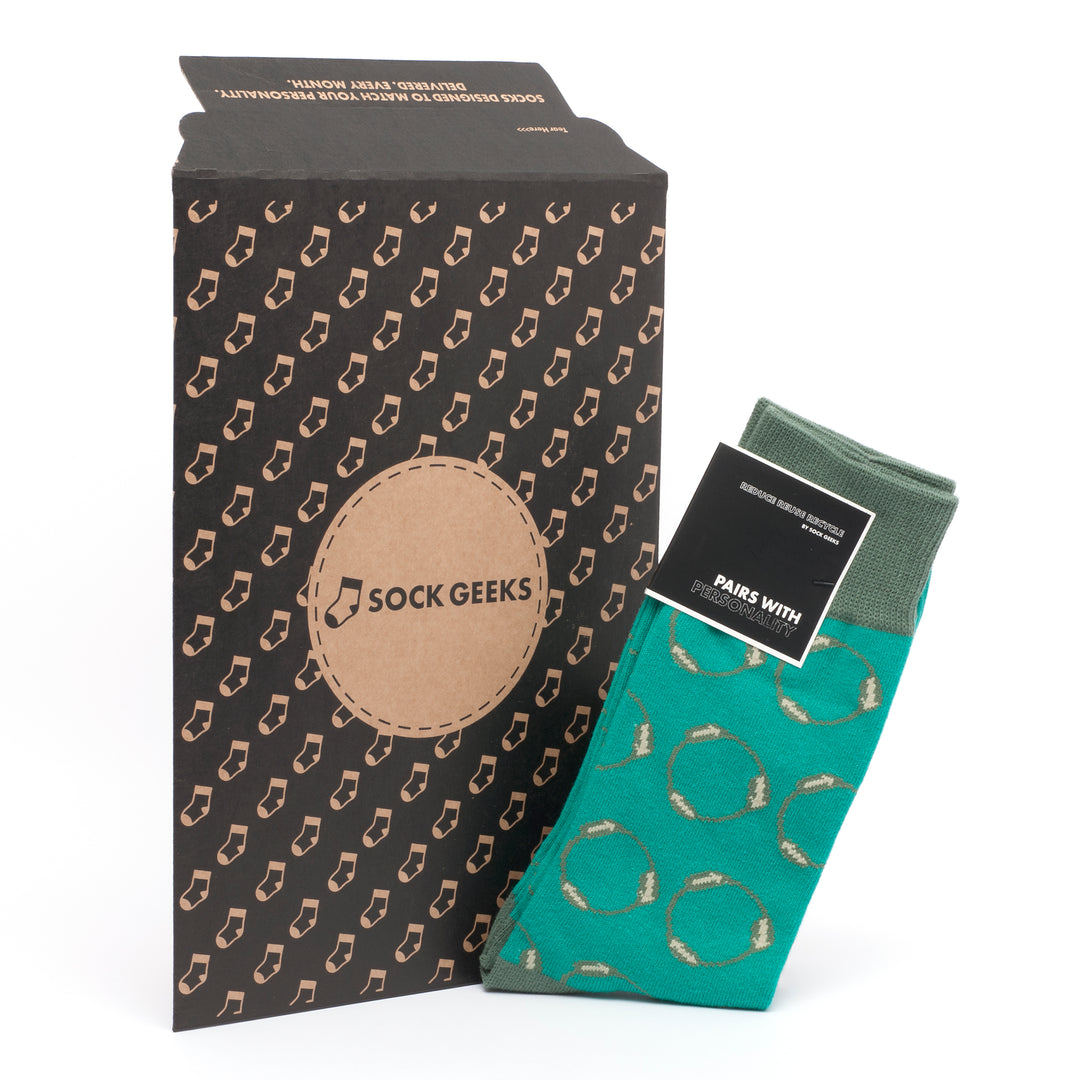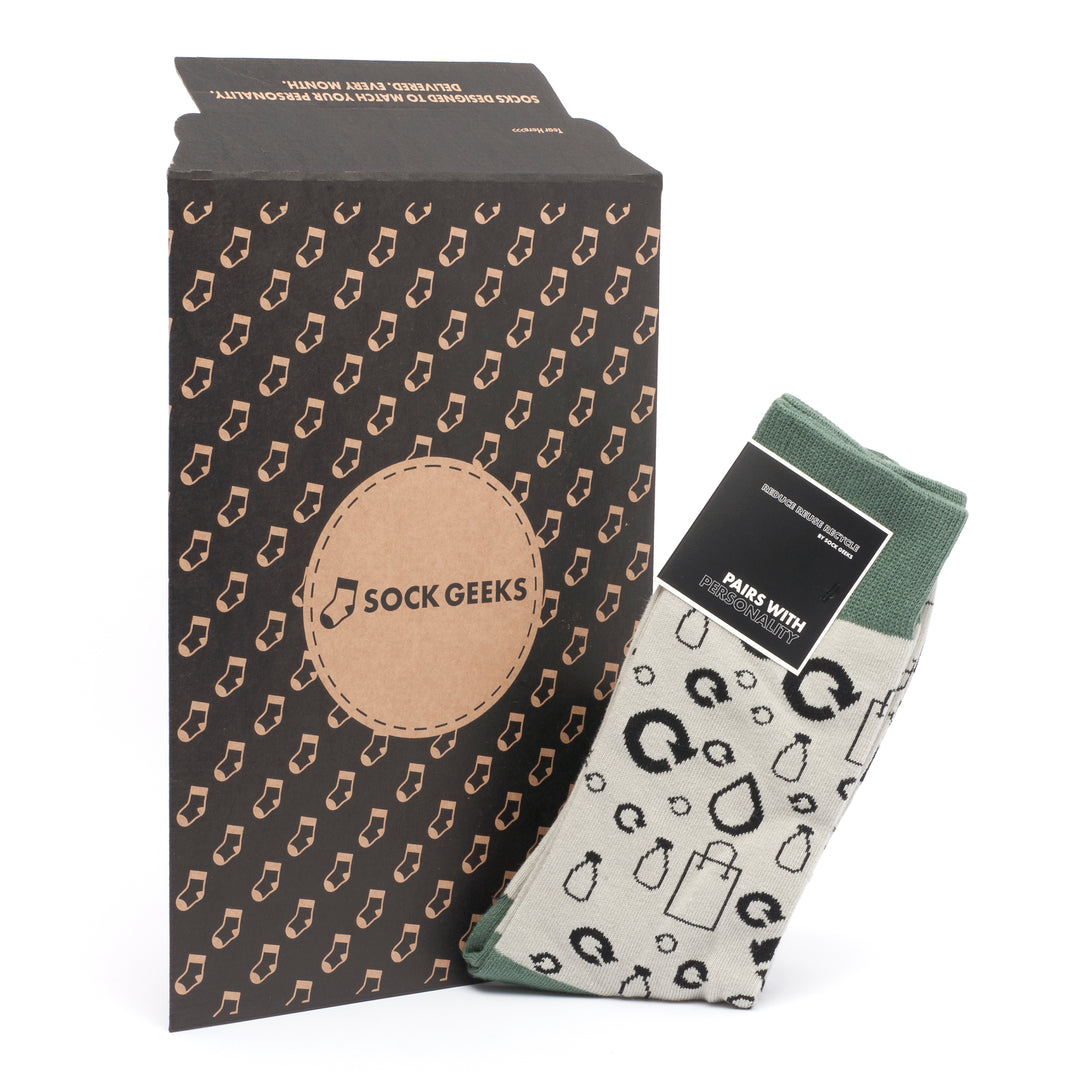Sock Care: Make Your Socks Last Longer
Key Takeaways
- Taking the time to care for your socks keeps them fresh and comfortable, maximizing their lifespan and making your investment in high-quality socks pay off. Keeping them clean and mended goes a long way toward avoiding abrasions and rips.
- Wash socks in cool water, ideally at 30°C, using a mild detergent. Wash dark and light colors separately to prevent bleeding and wash socks inside out to help protect the fabric.
- This helps to keep the elasticity over time and prevents any unwanted shrinkage. Air dry in a flat position or by hanging, avoiding tumble drying and direct heat sources.
- Store socks in pairs. i.e., fold or roll socks neatly. Don’t ruin the elastic by jamming one sock inside the other.
- Things like hot water, harsh detergents, or drying the wrong way can make these mistakes pretty common. These mistakes ruin socks and decrease their durability.
- You’ll get the perfect fit, performance, and longevity when you invest in premium quality socks. With the right care, you can get the most benefits from them, making them a smart, cost-effective long-term investment.
With the right sock care, your favourites will last longer and feel better with each wear. Cold or lukewarm water is best for washing socks, keeping them from shrinking and allowing fibres to hold their shape and fit.
Air drying is less abrasive than the tumble dryer and spares extra damage caused by heat. To keep socks elastic and avoid unnecessary stretching, store them folded rather than rolled.
For more delicate materials such as wool or cashmere, hand washing with a gentle detergent is best in order to keep them soft and lasting. If you check them regularly for holes or thinning areas, you can repair them in time, making them last longer.
By taking these simple steps, you’ll not only help your socks last longer, you’ll save money and reduce waste in the long run.
Why Sock Care Is Important
Caring for socks may seem like a small issue, but it’s more important than you think. Socks aren’t just an accessory; they’re an everyday necessity! When you take good care of them, you’ll notice a major difference in comfort and sock longevity. Failing to properly care for them can lead to breakdowns, stickness, and even premature landfill accidents.
A little time spent learning about proper sock care goes a long way to helping both you and the planet. Sock care really depends on the socks you’re wearing. Additionally, certain types of socks, such as work socks and sports socks, are made to be more durable and performance-oriented, so a tighter fit is critical for durability.
Poorly fitting socks will cause irritation or even blistering under extended use. Delicate socks, such as women’s dress socks and those made from merino wool, need extra care. This special care prevents them from snagging and stretching out, ensuring they last longer.
Proper storage practices are just as essential, especially for wool socks, as moths just love to feast upon them. Sealed containers or moth repellents can store them safely. Hygiene plays a big role; socks are notorious for trapping bacteria and odor, especially after a workout or long day of wear, so it’s important to wash them effectively.
Heavy-duty detergent is your best friend when it comes to performance socks, especially since it’s tough on sweat and odor. In addition to regular washing, adopting easy practices such as regularly trimming your toenails can prevent holes and prolong the life of your socks.
Even more surprisingly, up to 75% of lost socks are due to maintenance mishaps, highlighting the need for regular maintenance.
How to Wash Socks Properly
It pays to take care of your socks! When you understand how to wash socks properly, you can significantly increase their sock longevity and ensure they remain comfortable. Socks are made with a wide variety of fabrics, including luxurious options like merino wool and cashmere. Each type requires unique treatment to preserve their fibers and performance.

With these easy-to-follow but powerful tips, you can ensure your socks outlast the rest of your clothing collection. At the same time, consider the environmental cost of these products. Using a mild detergent goes a long way in maintaining the quality of the material, especially for delicate items such as cashmere, silk, or merino wool socks.
The safest way to wash these kinds of socks is to handwash them. It’s a gentler tumbling process that reduces surface abrasion, so they’re softer and stay looking new longer. If you’re washing cotton socks, you’ll do just fine with a machine wash at 30-40°C, which will get them clean and avoid shrinkage.
The safest way to wash these kinds of socks is to handwash them. It’s a gentler tumbling process that reduces surface abrasion, so they’re softer and stay looking new longer. If you’re washing cotton socks, you’ll do just fine with a machine wash at 30-40°C, which will get them clean and avoid shrinkage.
Separating your socks prior to washing is an important habit to develop. It keeps them from tangling together, which can stretch the fibers or even lead to ripping. This practice not only keeps your socks out of harm’s way while washing them but also promotes their longevity.
Did you know that up to 60% of socks are lost in the wash? By washing socks gently and carefully, you not only maintain their quality but also reduce waste, as improperly cared-for synthetic blends can take years to decompose in landfills. Embracing proper sock care contributes to a more sustainable lifestyle.
Ultimately, a careful choice in washing habits can lead to better durability and performance in your favorite pairs of socks. With simple habits, you can enjoy your socks for a long time and keep them in excellent condition.
Drying Socks the Right Way
Drying socks the right way isn’t just about how easy it is for hand knitters and sock knitters to dry their socks. Each material needs a specific approach, and knowing this can go a long way to improving care.
In general, cotton and polyester socks will dry much more quickly than wool or silk socks will. Cotton socks are perfect for everyday wear, since they wick sweat and odor and stand up to constant laundering. These can go in the tumble drier too on a medium heat cycle, making them a very practical option for today’s busy lifestyles.
For socks with a high cotton content particularly no-shows with silicone grippers air drying is usually the way to go. This technique preserves their form and increases their longevity.
With synthetic blends, like performance socks, it is generally recommended to tumble dry on no heat. Or air dry them to take good care of them. While these materials are extremely durable, they do last longer with a little TLC to keep their elasticity and fit.
With synthetics taking up to 200 years to decompose in landfills, going air-dried is a choice that’s better for the planet. If you are using heavy-duty detergent to fight sweat and odor in your athletic socks, dry them the right way. This simple, additional step and your socks will last a long time.
It’s important to mention that as much as 80% of socks are permanently lost in the wash from improper drying. Using mesh laundry bags or matching socks up in pairs before drying can reduce this.
Pair this easy practice with intentional drying techniques, and you’ll encourage an eco-friendly, practical sock cycle for years to come.
Storing Socks Correctly
Correctly storing your socks can help them last longer, thus enhancing sock longevity and helping you avoid sock shock. Properly storing your socks is an easy way to keep their quality intact and ensure they hold their shape. On top of that, you’ll love your new tidy sock drawer! This is more than just keeping things orderly it’s about maintaining your socks as cozy and durable as possible.
First, consider how seasonality might affect how you store your socks. Thicker alternatives, like merino wool socks frequently used in winter, need to be kept apart in the summer. This does double duty by saving space while keeping them out of dust or unwanted handling.
This is where breathable storage bags or cloth containers come in handy. For socks composed of natural fibers such as our Capricorn Mohair, breathable conditions are even more vital. Plastic storage can cause moisture to build up, leading to bad odors or long-term fabric deterioration, ultimately impacting the durability of your socks.
Sorting socks by type of material and color is another practical solution. Whites, colors, and specific blends like cotton or synthetics should be separated. This way, it’s easier to find what you need and can save you from color bleeding or mismatched pairs.
For one, folding socks in half instead of balling them up is a way to keep the elastics from being stretched, preserving their shape and structure. For particularly sheer socks, such as women’s hosiery, store them in a mesh bag. This keeps them from snagging or tearing, both during washing and while storing.
With proper care, high-quality socks can last 6–12 months or more, reducing waste significantly since synthetic blends can take years to decompose.
Common Mistakes to Avoid
Caring for your socks may sound like a no-brainer, but we find that folks often slip up. These mistakes can significantly shorten their sock longevity and efficacy. With knowledge of these mistakes, you can ensure your socks stay comfortable and long-lasting for months to come.
The biggest mistake is washing your socks too often. Taking the approach of washing them after every use – while it sounds obvious – just isn’t practical. In fact, over-washing can make them less elastic and shorten their lifespan.
If washed and stored properly, high-quality socks, such as merino wool socks, can last anywhere from 6 to 12 months. Washing with a mild detergent to protect your fabrics is very important. Harsher products can weaken the fibers, which is especially worrisome in natural materials such as cotton or wool.
To keep your sweat- and odour-wicking performance socks in top shape, use a heavy-duty detergent. It will keep them all working at their very best. Proper cleaning doesn’t end with the right detergent; socks should be air-dried or tumble-dried on low heat for best results. Excessive heat may cause the fabric to shrink, warp, or lose elasticity, negatively impacting fit and comfort.
Another step largely missed is sorting socks by material and colour before washing. Combined laundry loads can tangle delicate fibers and lead to colour bleeding. This risk is amplified when you wash synthetic blends with natural fabrics.
While synthetic socks will offer long-lasting wear, this has an environmental downside, as many take decades to break down in landfills. Not only does proper care extend their life, but it lessens environmental waste as well.
Last but not least, not following care instructions from manufacturers will cause premature damage. From more than 20 years of textile industry experience, it never fails to bring up one of the most easily avoidable mistakes.
How to Make Socks Last Longer
Taking care of socks might seem straightforward, but small habits can make a significant difference in how long they last. When you take time for proper sock care, including washing, drying, and wearing them correctly, you’ll keep them out of landfills and extend their sock longevity.
Putting socks in the right wash cycle when you do laundry will save wear and tear on the sock. Sort them into piles by colour white and colours and fabric type, such as cotton or synthetic blends. This prevents colour bleeding and ensures that every material gets the right treatment for durability.
For added protection, keep your socks in a mesh wash bag. This helps prevent them from getting caught on zippers or coarse fabrics in the wash, which is essential for maintaining their longevity.
For laundry, a cold wash 30 degrees Celsius is perfect. Using hot water will break down the fibres over time, especially in cotton socks. A gentle detergent is key, too, since rough cleaners wear down materials and can impact the durability of woollen items.
Never use fabric softeners, ever! They coat the sock fibres, reducing their breathability and making them wear out faster, which defeats the purpose of proper sock care.
How you dry your socks makes a huge difference here as well. Air-drying is gentler than tumble-drying, which can shrink your socks or distort their shape. Though it takes a bit more time, it’s the best way to maintain elasticity and fit for long-lasting wear.
Changing socks multiple times a day helps to prevent the wear caused by sweat and moisture. This very basic but commonly skipped step is key to an energetic lifestyle and contributes significantly to sock longevity.
Benefits of Premium Quality Socks
The luxury of wearing quality socks is more than just stylish; it plays a crucial role in maintaining foot health, comfort, and overall quality of life. Made from high-quality fibers with purposeful design details, these socks deliver real benefits that make them a joy to wear every day. Investing in merino wool socks ensures that your feet enjoy the best possible care.
Premium socks excel at providing a higher level of comfort with added cushioning and support. Whether you’re on your feet for long hours at work or enjoying outdoor activities, the impact is significant. Socks with reinforced soles and targeted padding reduce pressure on key areas, enhancing sock longevity.
This thoughtful design goes a long way towards making them comfortable to wear all day long. This is especially beneficial during high impact activities such as running or hiking, where feet are often under pressure.
Next, moisture management is key. High-quality socks use moisture-wicking materials that help pull moisture away from your feet. This helps to avoid malodour and blister formation, both of which are the result of moisture.
Now, let’s explore why merino wool is the go-to fabric for premium quality socks. It effectively fights bacteria and helps regulate temperature. Its moisture-wicking properties keep feet warm in winter and cool in summer, making it ideal for daily wear in any climate.
Durability stands out as another key benefit; premium socks are designed for long-lasting wear. They maintain their shape and function wash after wash, meaning you need to replace them less frequently. Well-fitting socks contribute to avoiding issues like plantar fasciitis and other common foot ailments.
Research indicates that wearing appropriate footwear and socks can help avoid up to 80% of foot problems. That’s why it’s essential to invest in the best quality options available.
Sock Geeks: Thoughtful and Unique Socks for Every Occasion
At Sock Geeks, we believe socks are more than just a daily essential they’re an expression of style, comfort, and innovation. With a commitment to quality and sustainability, we offer a range of premium socks, including personalized designs, eco-friendly bamboo options, and high-performance merino wool socks designed for durability and comfort. Whether you’re looking for a fun, stylish gift for Father’s Day or investing in everyday essentials that last, Sock Geeks ensures your feet stay happy while reducing environmental impact. Discover our collection and experience socks like never before.
Conclusion
Sock care is more simple than you’d expect. A little TLC can help our socks last. Proper washing, drying, and storage will save you time and money in the long run. Put in some sock care work today for a future full of happy feet! Little things preventing the hot wash, not overfilling the washer add up to a huge impact. When you opt for high quality socks, you’ll find that you’re more comfortable and your socks last longer, which makes them a worthy investment.
Your socks certainly earn their keep each day. Take good care of them, and they’ll last longer and keep your feet happier. Test it out your dogs will thank you.
For more tips and practical advice on socks and other everyday essentials, check out our other guides. By taking small steps today, you can improve your sock care for years to come. So does your wardrobe.
At Sock Geeks, we believe socks are more than just an everyday essential they’re an investment in comfort and sustainability. Our collection of high-quality socks, from durable merino wool to eco-friendly bamboo, is designed to last. With proper care tips and eco-conscious choices, Sock Geeks helps you make the most of your favorite pairs while reducing waste and supporting long-term comfort.
Frequently Asked Questions
Why is sock care important?
Taking good care of your socks, especially merino wool socks, will enhance sock longevity, save you money, and contribute to happy, comfortable feet. Properly cared for socks keep odours and skin problems at bay for healthier feet.
How often should I wash my socks?
If wearing socks for two or more consecutive days, a careful choice to wash socks after each wear enhances sock longevity, wards off bacteria accumulation, foul smell, and keeps them clean and fresh.
What’s the best way to dry socks?
To ensure sock longevity, air-dry socks on a flat surface or a drying rack, avoiding direct sunlight or high heat, which can weaken the fibers and lead to shrinkage.
Can I wash socks with other clothes?
Yes, but make sure to sort socks by colour and fabric type, as this helps maintain sock longevity. Protect delicate socks in a mesh laundry bag to prevent snagging or losing them in the washing machine.
How can I make my socks last longer?
To enhance sock longevity, wash on delicate cycles using a specific detergent, avoid harsh detergents, and air dry. Regularly rotating your sock collection minimizes wear and tear on each individual pair.
Why invest in premium quality socks?
Premium socks, especially those made from merino wool, are long-lasting and comfortable, emphasizing moisture-wicking and odor absorption properties for all-day wear. These durable materials minimize wear, wick moisture, and increase support, saving money over the long haul.
What are common sock care mistakes?
To ensure sock longevity, avoid washing socks in hot water, using bleach, or tumble drying on high heat, as these can break down fibers and lead to premature sock death.




















Leave a comment